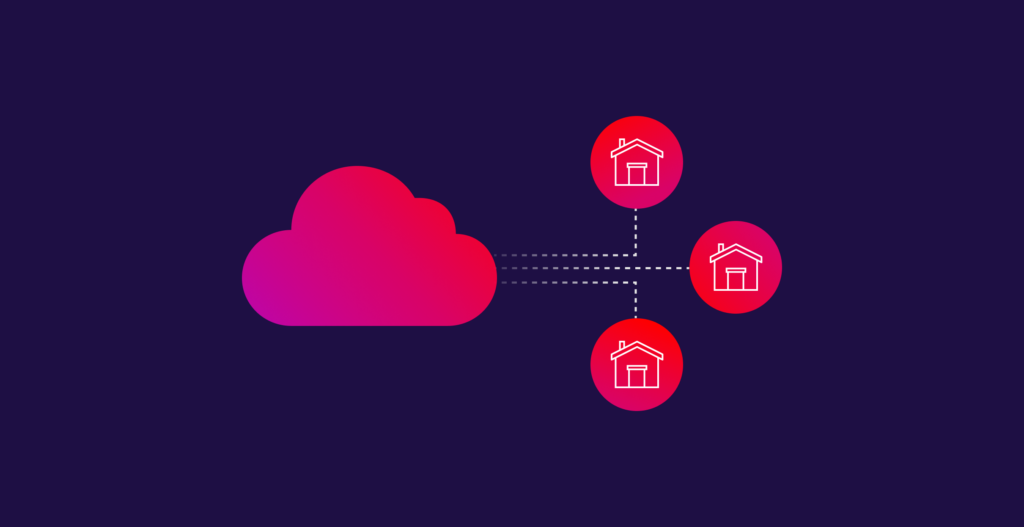
Comparing Last-Mile Connectivity Methods
- Cloud networking
- May 4, 2022
- RSS Feed
By Jason Bordujenko, Global Head of Solutions Architects
When it comes to networking in 2022, businesses are turning their attention to the last mile. But what are your edge connectivity options – and which is best?
Connectivity options, alongside the rest of the internet, are constantly changing. When it comes to last-mile access, choices are continuously evolving, especially for companies looking to balance value, flexibility, and risk.
In plain English, this statistic means that secure, highly-performant connectivity from the data center is no longer sufficient for enterprise networks – the requirement is now end to end. But with multiple last-mile connectivity methods available, what factors can you use to evaluate and choose the best one?
Here’s our comparison of last-mile connectivity choices to see which offers the best speed, security, price, performance, and flexibility.
Option 1: Commodity (public) internet
What it is: Consumer or commodity-grade public wireline connectivity comprising consumer access, along with basic public cloud services. Physical infrastructure can include copper, coax, fiber, or some combination of these.
The pros: Ease of accessibility. Helpful in baseline bandwidth situations.
The cons: Poor reliability, lack of SLAs, possible implementation delays, and lacking provider-side security options.
Internet connectivity problems happen often… forcing companies to suffer impaired connectivity with no responsibility or resolution provided other than “have you tried turning it off and on?”
Like water or electricity, commodity internet is an essential utility, and an excellent one – until it is down or otherwise becomes unavailable. The ease of connecting a small office or home office location via a commercial or commodity (generally telco) source may seem enticing. But despite their ubiquity, public internet connections often prove unreliable and are not supported by the same strict uptime guarantees as private or enterprise-grade connectivity options. Internet connectivity problems happen often—with causes ranging from weather disruptions to bottlenecks during peak and unanticipated demand periods—forcing companies to suffer impaired connectivity with no responsibility or resolution provided other than “have you tried turning it off and on?”
Another problem with commodity internet is control; because its services are designed for consumer use, the assumption is that users will have consistent consumption needs that fit the profile of a residential subscriber. For businesses, however, performance and bandwidth requirements can change dramatically. If the company is launching a new product, expanding into a new market, or anticipating some other spike in usage, a greater bandwidth option is sometimes required, taking into consideration both upstream and downstream factors. But the commodity internet doesn’t generally offer that level of control – and new company milestones can quickly turn into disasters that impact your business’ bottom line.
The public internet is also the least secure option for businesses that don’t have a comprehensive and up-to-date understanding of the security challenges posed by simply “plugging in”; simple Network Address Translation (NAT) setups aren’t sufficient to save you. Ransomware and malware attacks are a constant concern for enterprise internet users, and they have recently skyrocketed thanks to the war in Ukraine – a deal-breaker for companies looking to protect their businesses.
Option 2: FWA/LTE (4G, 5G)
What it is: Fixed-wireless access (FWA), or LTE, is an alternative way for Internet Service Providers to provide small businesses and homes with last-mile connectivity. In the case of LTE or mobile telephony provider options, that last mile could even be moving.
The pros: As wireless technology coverage expands, FWA and LTE options are expected to provide ISPs with more cost-effective alternatives or backup paths to the copper, coax and fiber mix, especially in geographical locations where it has typically been cost-prohibitive for ISPs to remediate older technologies or lay new cable.
The cons: Unless specifically provided on a private or closed APN, LTE comes with the same problems as the public internet: Poor reliability, control, and security. Data overages are also common, and even formerly unmetered plans are giving way to more complex options that can hide costs until it is too late.
Fixed-wireless access is generally designed to service a large number of subscribers who are using dedicated external antennas, specifically frequency/band controlled hardware, to remove layers of uncertainty and chaos that can occur in mobile telephony networks pressed into the service for internet or data transfer requirements. This is the good news – and the bad news. Like commodity internet, FWA gives companies easy “plug and play”-style connectivity, which is handy if you’re dealing with changing office attendance protocols and your workforce is in flux between on-site and work-from-home.
But the downside is that FWA comes with all the problems of commodity internet – and in a lot of cases, a lower total available bandwidth or monthly data cap. And if your company is in a rural area, last-mile connectivity problems can be even more frequent. Companies should also be wary of service quality; vendors usually baseline services to consumer needs, which can be problematic if your company requires consistent upstream or downstream bandwidth availability. It can be more reliable in some ways than physical fiber options from a physical disruption standpoint, however it’s more susceptible to problems in the radio-frequency environment, which can require specific skills or equipment to identify and remediate.
Option 3: Dark (private) fiber/wavelength services
What it is: “Dark fiber” refers to fiber-optic cable that has already been laid but is not yet, or not currently, in use. Wavelength services refer to lighting a particular ‘color’ of a fiber network that is dedicated to a single customer.
The pros: By harnessing dormant fiber cable or unused wavelengths, larger businesses can scale their available bandwidth for network applications far beyond the capacities and capabilities that existing, provider-occupied wireline technologies can offer.
The cons: Deploying and operating these light-based networks can be costly, and requires trained and skilled personnel and equipment in order to implement and maintain.
While private fiber can be used to carry commodity internet, it also augments the capabilities of commodity internet – it offers higher reliability, closer control, and greater options for implementing layered security. Utilizing dark fiber gives you private access, but not ease of accessibility. Whether you’re building your own network or leasing someone else’s, utilizing fiber requires serious commitment, and in some cases, specific licenses or regulatory agreements.
Managing your own dark fiber or wavelength-based network also means becoming your own vendor, which can be costly and time-consuming as your infrastructure will require constant monitoring. And if you go the leasing route, your company may once again face many of the issues associated with commercial providers – lack of availability in certain areas and overstated support claims, to name some.
When it comes to last-mile connectivity, fiber makes sense for a small selection of companies that need a dedicated optical network. As the core of the network element is passive (glass), it can be upgraded by replacing the components that make the dark fiber lit – the active elements only. For instance, if you need high-capacity interconnections between multiple sites and data centers for real-time replication and large data transfers, and you want complete control over your infrastructure, fiber is the way to go.
A minimum benchmark for considering this route is applications requiring 10 Gbps of throughput, sub-zero latency, and specific routing. It’s also worth noting that moving to 100 Gbps, for example, wouldn’t require re-laying of fiber; just upgrading the transceivers and amplifiers that may be used on either end or for longer spans. Otherwise, it’s just too much firepower (and cost) for most organizations to justify.
Option 4: SD-WAN
What it is: A virtual software-defined wide-area network (SD-WAN) that allows enterprises to leverage any combination of transport services—including LTE and commodity broadband internet services—to securely connect users to the applications that matter to them, wherever they may be.
The pros: Securely and intelligently directs traffic across a customer’s WAN, from the edge directly to trusted SaaS and IaaS providers. Determinations can be made on paths or combinations of paths across public and private connectivity options, automatically based on factors such as latency, jitter, or optimal routing paths to specific services – even as these change in real time due to load or outages.
The cons: Not all solutions have equal benefits; evaluate new-generation providers that unlock greater efficiencies through more intelligent handling of workload optimization and security features.
Unlike the other options we’ve covered, SD-WAN allows companies to take more direct control of their last-mile networking and allow a greater degree of flexibility. Customers can securely and intelligently direct traffic to trusted providers for lower costs, fewer hops, end-to-end security, and better network performance. However, not all providers are the same. Research and choose a trusted provider with large market share and updated SD-WAN features to avoid bottlenecks or network management issues.
For companies that want optimized SD-WAN connectivity down to the last mile, Megaport Virtual Edge (MVE) gives companies supercharged branch-to-cloud connectivity via a private Software Defined Network (SDN). MVE allows companies to deploy SD-WAN gateways, virtual routers, and integrated transit gateways in minutes, not months, and is integrated with the industry’s top SD-WAN providers.
The verdict
With its poor performance, security issues, and lack of control, commodity or public internet is a great backup choice, but never suggested as a primary or only path. FWA or LTE masquerades as the ideal alternative, but is generally handled and routed on the same equipment and paths as commodity internet. Dark fiber or wavelength services can fit certain use cases but can be a very costly choice both in the short and longer term.
Increasingly, in the majority of business cases, SD-WAN is worthy of consideration. And with an MVE-enhanced SD-WAN provided by one of Megaport’s integration partners, you’ll have a high-performance, customizable option you can scale as your business continues to grow.





